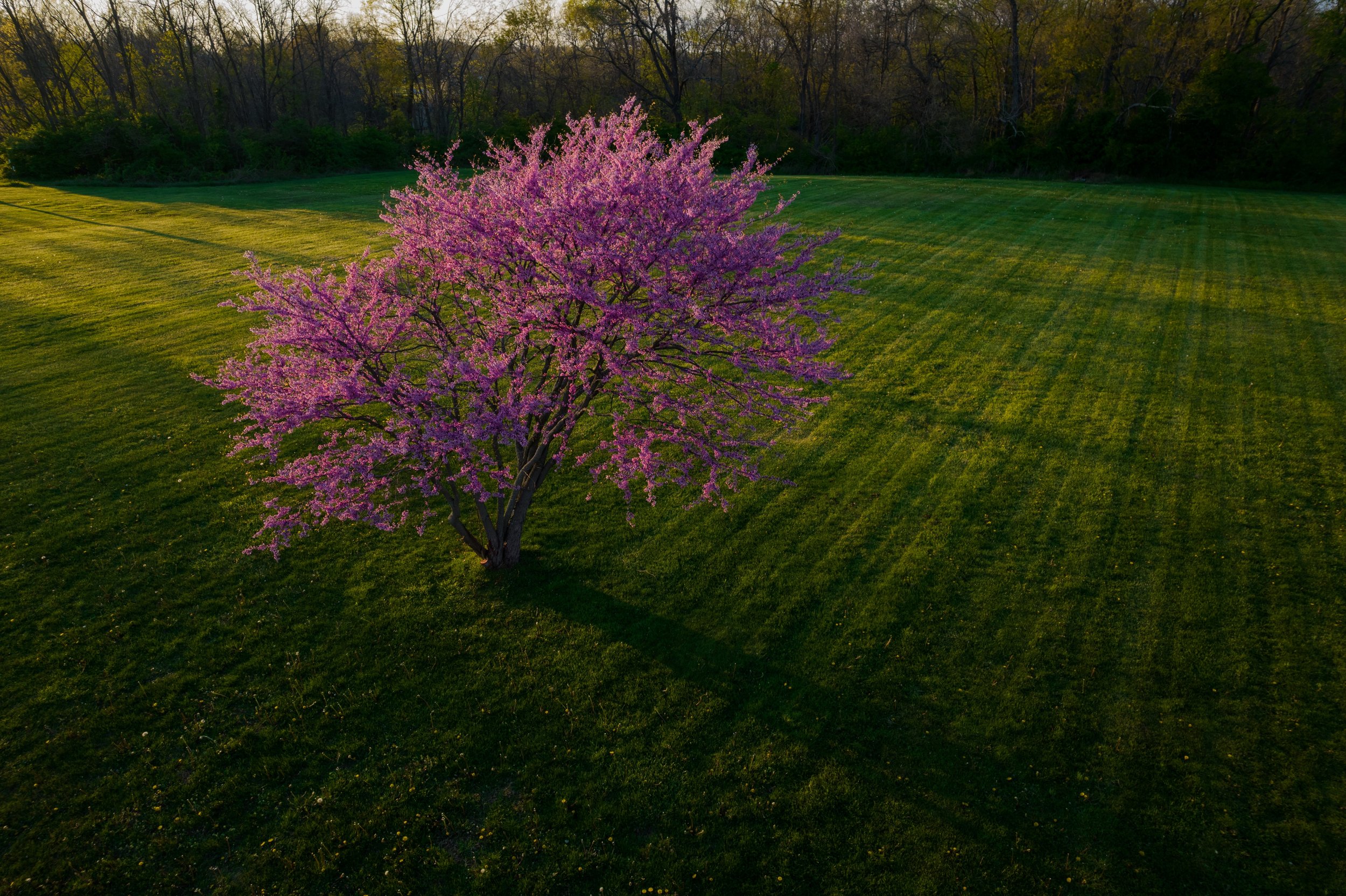Urban Design with Natives
Published in APLD Magazine — Design Online — Sep. 2020
I remember my first native-meets commercial experience. It was easily in the early 90’s. I was designing at night and leading a crew during the day. Like many site crews I was replacing all my calories, and maybe extras now looking back at pictures, by eating lunch at McDonalds. I’m sure like many of you as you drive, meet new friends at their homes or move around your areas you snarkily critique the landscapes in which you move. For me I like to pick out places with red mulch. Then, with much higher meaning and purpose, disparage them in my truck with windows shut. Well, it was one of those days at McD’s. Red mulch making it hard for me to work up an appetite while we all laughed and pointed from the truck at the ‘poopy’ landscape.
Then low and behold at window #2 I spot a line of Itea. They looked good. Someone had chosen a reasonable location and they were thriving. Boy was I disappointed. All this pent-up anger about how nobody else cared and how I was clearly the final voice in landscape quality: all went out the window. In a time of Pennisetum and Barberry someone other than me had the forethought and concern to think about using natives. I have clearly grown out of that naive thinking but so has our industry. It was truly unlikely to see the use of natives in commercial projects, and residential projects both, not too many years ago. To some degree one can understand the polarizing pull in plant choices for urban or commercial sites. As horticulturists we advance plant species for specific reason: larger fruit, raspberries that don’t fall apart, later flowering season of a species, dwarfing etc. At times this work to create better plants pulls us away from obvious and simple solutions. It also puts ‘Frankinplants’ in our palettes that when working in difficult spaces such as urban settings we want to dip into. Many of those selections have real viable uses. Live plants that thrive in difficult soils make clients happy, call backs less, and the look of our projects better over long hauls of neglect.
Cercis canadensis in bloom.
Fast forward 10 years later, the Pennisetum has invaded the lawn and the Barberry has moved down the hill into the woods, and what seemed like a good idea isn’t so much presently. These are the twists and turns when planning urban settings, innately low maintenance difficult sites, where we find ourselves. I feel there are a few things that drive the ability to shift the thinking on these sites. First there’s education. Not the education that I do at a University, but what we do as professionals in our own plant journey and in how we share that with our clientele. Approaching a setting and a group of stakeholders with a native friendly plan up front and with concerted well communicated education on why it is a native plan can go a long way. On the selfish side this educational process can have distinct portions for you as well – building expectations. Building expectations that the impact you plan isn’t always for this year but at times next, and that a high maintenance perennial border isn’t financially achievable in their setting, nor is a low maintenance invasive plan environmentally reasonable in their setting.
Luckily, I think we are beginning to see an emergence of informed clients along this path too. This gives us opportunities. Within the context of stakeholders and urban settings, we have those who make decisions, those who engage in the dialogue and those who don’t but still use the space, pay fees or taxes and will come out of the woodwork at any and all inopportune moments. These are some of the challenges within urban settings, not just the harsh conditions but breadth of opinions that will assess your results. In this breadth of opinions, you will inevitably hear from the furthest away from your own views (let’s call them informed views). On the other end of the spectrum you will find those what are like minded and the average person who has also grown with the native movement. Use these people as opportunities for partnerships. Also, bring in local experts, such as those who may run the local nature center that everyone likes to walk. Use these as partners within your presentation and education. Don’t try to wage this alone. Urban settings are public spaces, public spaces will be of concern to everyone including the expert’s or like-minded resident that reside in your community. These partnerships help with the education component and if you do have a local native resource, that are well loved and established, then you also have a resource for building those expectations.
All of this said lets also celebrate the small achievements. Using natives in the landscape is likely based on an environmentally informed set of personal principles or values unique to you. I feel strongly about my values, they drive who I do business with and how I strike my own line in the sand. But some values need to be looked at with benevolence. If I draw that line, and in a year the customer rips out my project, or the community walks through it feeling no connection or joy in the space, or worse I’m fired before I can even offer a positive suggestion, then my values become an absolute and that absolute has hindered the small forward progress available. There are times for that. But, if you read the room and realize up front you have a group that doesn’t share your deepest concerns, ask yourself if you, as the responsible leader in this setting, can I create a compromise? Can you create a mostly native plan that also gives a punch of non-native, non-invasive solutions that may fit the setting and group better?
You can sense from my thoughts; native in an urban setting for this group isn’t so much as a discussion of which natives to use or even if it is a good idea. I think we all appreciate their use, understand the pitfalls within either choice, appreciate our role as stewards of the earth and know our plant/site struggles. The conversation in our group of professionals today is how to build on or gain traction within the clients we serve. Urban settings and stakeholder groups are unpredictable, trying settings to work within. We not only have difficult sites, limited maintenance or follow through, regimented budgets – but we now add a vast array of opinions, many uninformed yet strong, and have to pull a group together. Urban designs with natives are not simply the applied science of Horticulture but more so the mantel of leadership. To that end, native design in urban settings is: education, building expectations, building partnerships, communicating (both hearing and voicing), and knowing when or where to draw your own line in the sand ( or clay, or gravel, or asphalt encrusted ‘soil’ that plague urban sites) all while still being a creative informed horticulturist.


